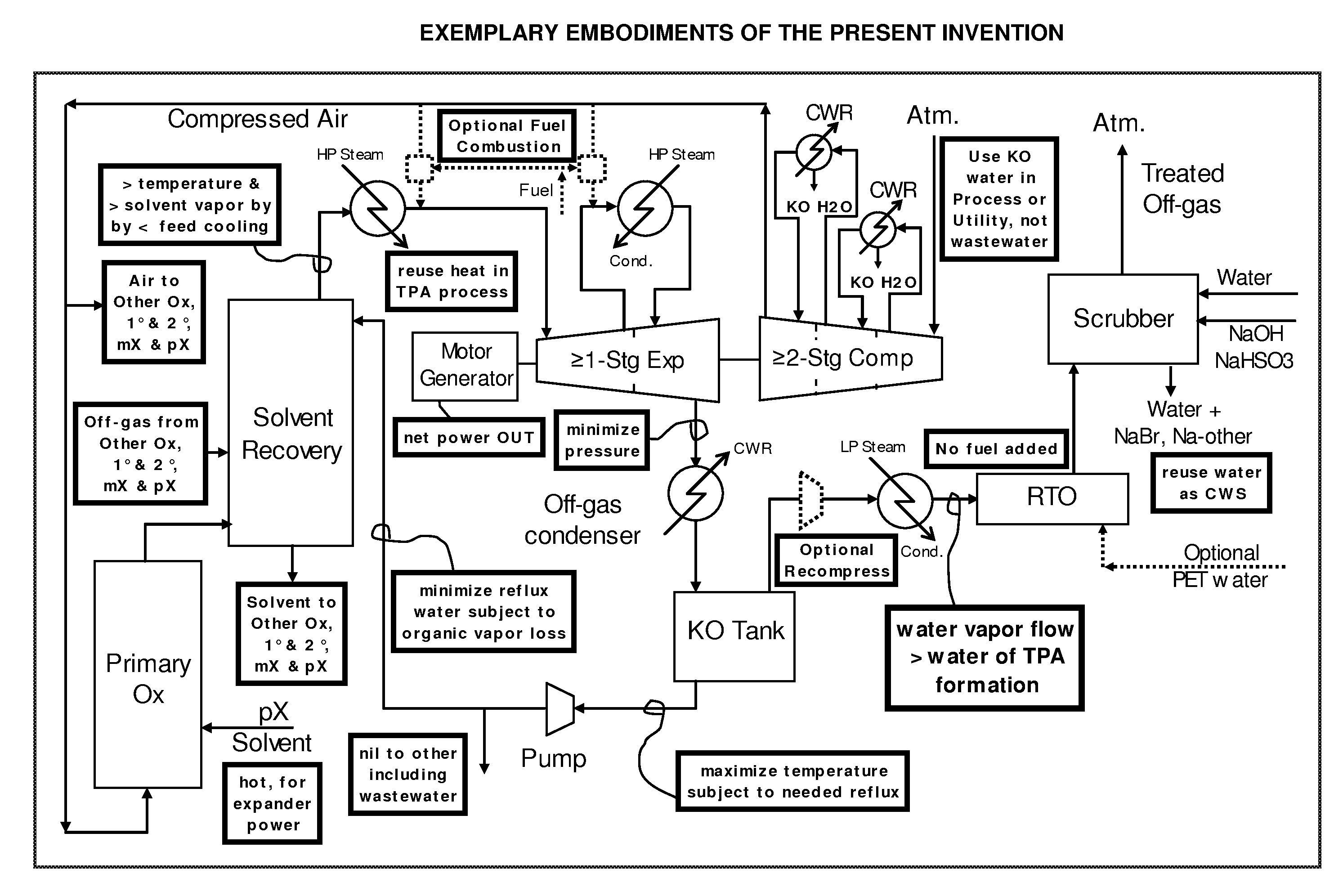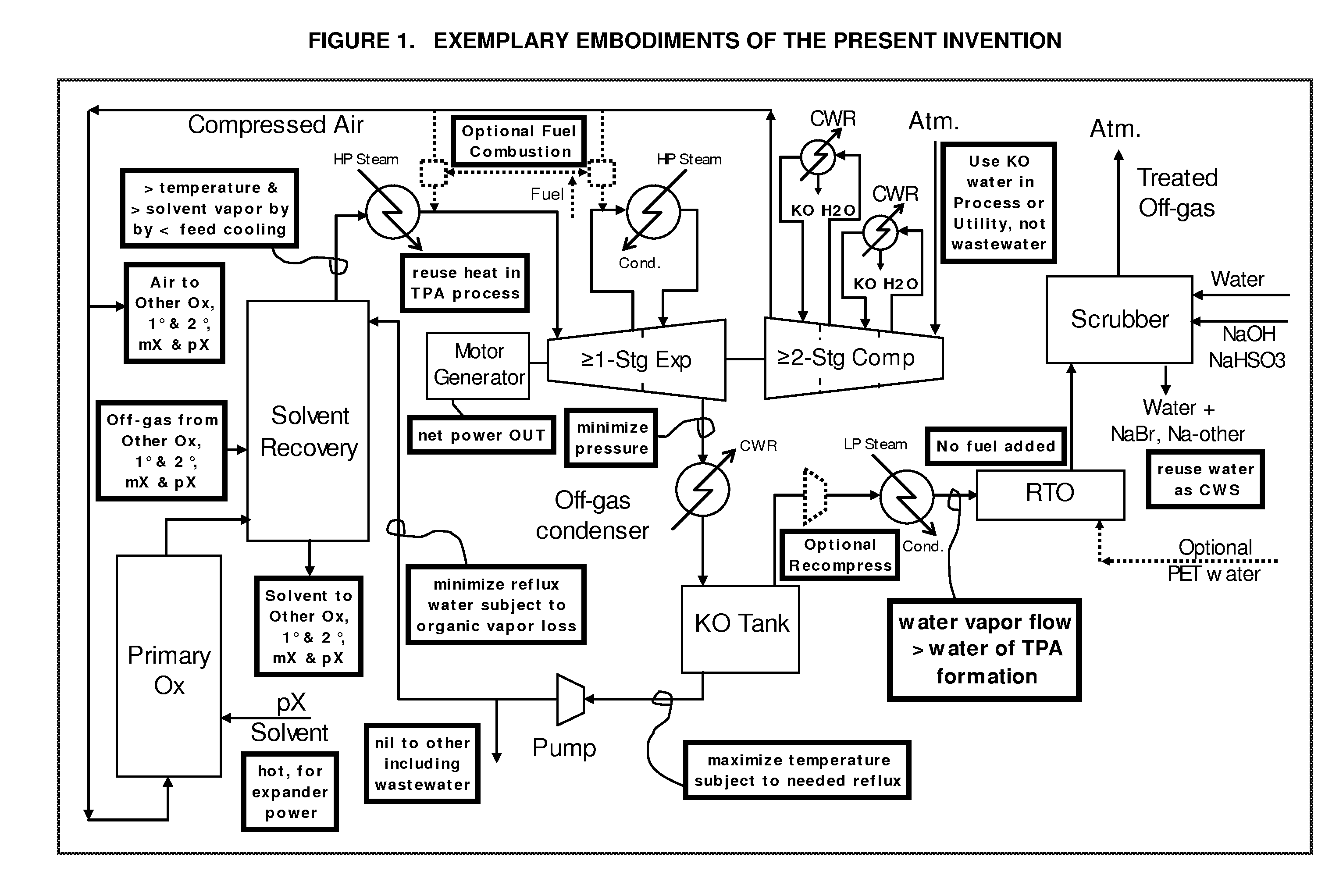Dicarboxylic Acid Production with Enhanced Energy Recovery
a technology of energy recovery and dicarboxylic acid, which is applied in the direction of carboxylic compound preparation, bulk chemical production, separation process, etc., can solve the problems of potential lubricant contamination of water, water contaminated with seal fluid, and large capital and operating costs for methyl acetate recovery and hydrolysis, so as to achieve no liquid wastewater
- Summary
- Abstract
- Description
- Claims
- Application Information
AI Technical Summary
Benefits of technology
Problems solved by technology
Method used
Image
Examples
Embodiment Construction
[0017]The inventions herein can be combined with the disclosures of US 20070293699 and US 20060047158 (the entire disclosures of which are incorporated herein by reference) for a preferred primary oxidation reaction medium, process, and means for converting pX to TPA. These reference disclosures comprise numerous preferred mechanical features and process conditions for a primary oxidation, with process conditions notably including temperatures and gradients, pressures and gradients, flows, compositions and gradients, agitation, and residence times and distributions. The usages herein for “oxidizable compound”, “solvent”, “oxidant”, “reaction medium”, and “hydrocarbyl” are according to the above references.
[0018]The inventions herein are more preferred when at least a portion of off-gas from a secondary oxidation reaction medium is combined with at least a portion off-gas from a primary oxidation reaction medium before processing in a solvent recovery and / or dehydration means. A seco...
PUM
| Property | Measurement | Unit |
|---|---|---|
| weight percent | aaaaa | aaaaa |
| temperature | aaaaa | aaaaa |
| temperature | aaaaa | aaaaa |
Abstract
Description
Claims
Application Information
 Login to View More
Login to View More - R&D
- Intellectual Property
- Life Sciences
- Materials
- Tech Scout
- Unparalleled Data Quality
- Higher Quality Content
- 60% Fewer Hallucinations
Browse by: Latest US Patents, China's latest patents, Technical Efficacy Thesaurus, Application Domain, Technology Topic, Popular Technical Reports.
© 2025 PatSnap. All rights reserved.Legal|Privacy policy|Modern Slavery Act Transparency Statement|Sitemap|About US| Contact US: help@patsnap.com


